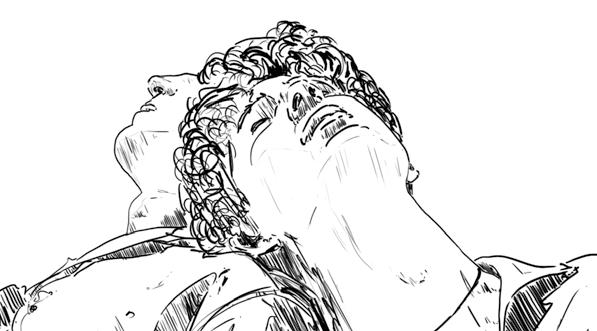
3 minute read
Pink and Blue
&AQUILA

Advertisement
Gender stereotyping can often feel restrictive, like being trapped in a gender-based cage and bound by certain expectations. In today’s society, there seem to be so many labels which we must fit into but many are still faced with the realisation that they don’t belong. Soon, these labels that society gives us, become us, and we are seen as nothing else. So how can we begin to solve the problem of gender stereotyping?
‘What would you like to be when you grow up?’: a question which everyone is asked at some point, yet even this is defined by our gender. Boys are often expected to answer with ‘soldier’ or ‘politician’ and it seems demasculinising to say ‘make-up artist’ or ‘model’, as it does not fit with the allocated stereotype. In reality, everyone is deserving of every job, as long as they have the right skills and work ethic needed. Yet I can’t help but feel that in some professions, the balance is still not quite correct. After all, although only 51.9% of the world’s population is male, men make up 70% of the seats in Parliament, as of 2018. The 195 women that reflect 30% of our government does not statistically represent the reality of a world that is as female as it is male. Furthermore, gender stereotypes continue to be imposed upon children from early childhood, even toys are divided by gender, with blacks, blues and greens in the boys section contrasted with the blend of pink, whites and purples in the girls section. We are immediately faced with boundaries and restrictions from such a young age.
This year saw the launch of ‘The Fawcett Society’, which is a campaign group that aims to investigate the use of gender stereotyping in advertising to young children. It outlines its aim as: ‘encouraging manufacturers to drop the lazy stereotypes and use their power responsibly.’ The campaign found that six out of every ten parents agreed that products marketed for their children used gender stereotypes in their advertisement strategies. The online survey conducted also found that 1,018 people believed that the issue affected boys as well as girls, with six in ten agreeing that it was more acceptable for a girl to be a “tomboy” than for a boy to be “feminine.” Indeed, 70% of participants who identified as ‘young men’ said that stereotypes had a ‘damaging effect on what it meant to be a man or a woman.’
The Fawcett Inquiry is not the only important work being done in this area. In 2011, arguably the most famous toy store in London, Hamleys, took the decision to reorganise their stock by category rather than gender. This meant that, for the first time, Action Man and Barbie could be found side-by-side in the ‘dolls’ section of the store as opposed to separated in aisles for ‘boys’ and ‘girls.’ However, it is important to note that gender stereotypes do still play an important role in the marketing of these two toys when it comes to the professions, styling and even colour choices used for each character. A few years after this, John Lewis went even a step further, by removing gender from the labels on their children’s clothing. So as you can see, some large companies are beginning to make steps towards addressing this issue, yet it can’t be solved unless we approach it with wide-scale change.
We also have to accept some of the responsibility for the casual, everyday sexism which can be the most damaging part of gendered stereotypes. Passing comments and stereotypical jokes have become a part of everyday life in our society, but these can allow gender stereotypes to manifest, therefore strengthening them. We need to work together to reduce this casually sexist behaviour which impedes progress in the movement towards complete equality. Together, we can all make the change that the world so desperately needs.
‘Every individual can make a difference every day by making conscious choices’ - Jane Goodall
S King, Year 9






